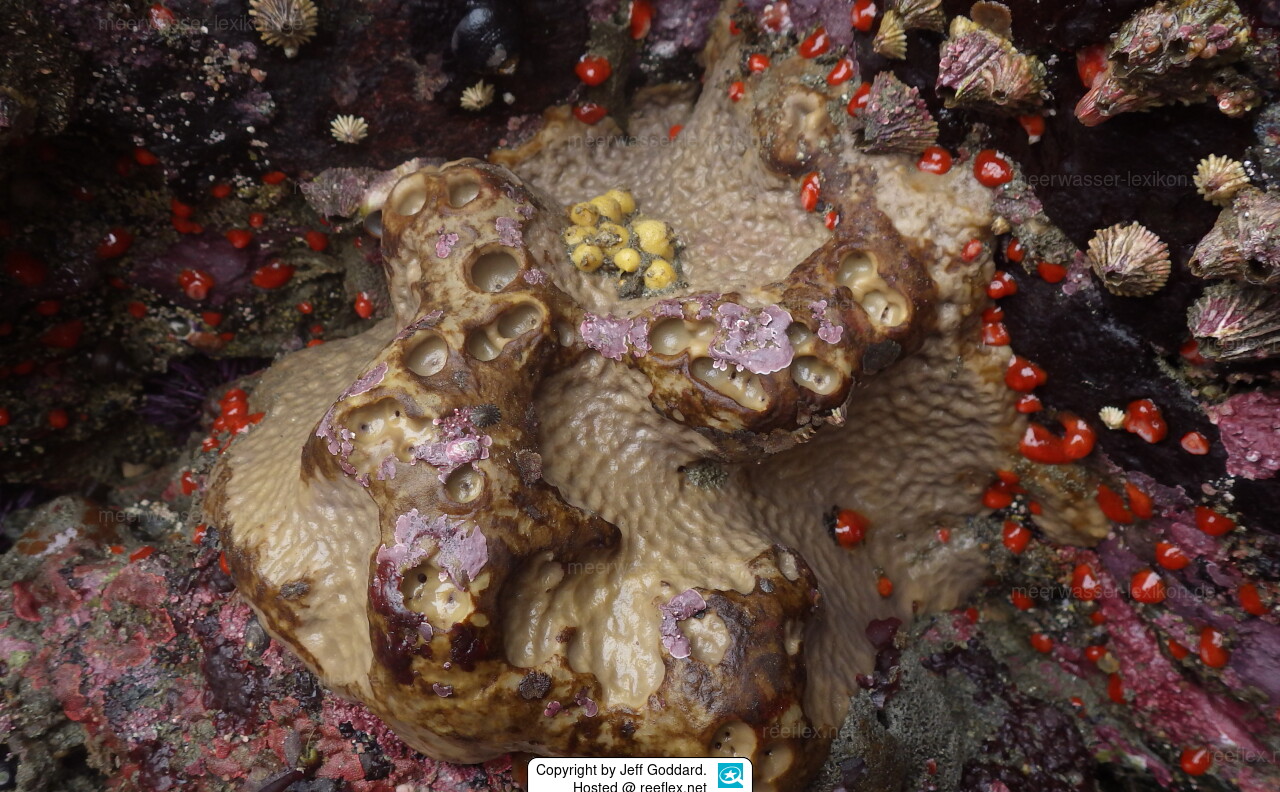Info
Spheciospongia confoederata Laubenfels, 1930
Spheciospongia confoederata has a massive, smooth, leathery texture and a gray to black coloration. The sponge has numerous, crater-like, oscula on the outer dorsum and can reach a thickness of 30 cm and a length of 100 cm.--.
Sponges (Porifera) are active filter feeders, usually harboring intricate networks of internal chambers and channels, as well as a wide variety of associated organisms, from microbes to mollusks and crustaceans.
Sponge barnacles, one of the most common sponge-associated crustaceans, are specialized barnacles such as Membranobalanus brachialis that live in the body or embedded in the surface layer of their sponge hosts, usually on the inhalation side to capture zooplankton from the sponge's inhalation currents.
The interaction between barnacles and sponges can be considered mutualistic commensalism.
The most likely benefits of this relationship for barnacles are:
(a) trophic benefits, as barnacles are constantly exposed to water currents and organic particles are trapped by their cirrus.
(b) protection from physical disturbance, as the sponge protects the barnacles from environmental disturbances such as sedimentation and predators.
Two main benefits can be envisioned for the sponge:
(a) strengthening of the sponge skeleton due to the tight attachment of barnacles to the sponge fibers.
This process can allow a considerable metabolic saving, since the production of fibers occupies a large part of the metabolic effort
b) the active filtration of barnacles on the sponge surface results in, improved trophic uptake of the sponge.
Visually similar species: Ircinia strobilina (Lamarck, 1816) and Geodia gibberosa Lamarck, 1815.
Spheciospongia confoederata has a massive, smooth, leathery texture and a gray to black coloration. The sponge has numerous, crater-like, oscula on the outer dorsum and can reach a thickness of 30 cm and a length of 100 cm.--.
Sponges (Porifera) are active filter feeders, usually harboring intricate networks of internal chambers and channels, as well as a wide variety of associated organisms, from microbes to mollusks and crustaceans.
Sponge barnacles, one of the most common sponge-associated crustaceans, are specialized barnacles such as Membranobalanus brachialis that live in the body or embedded in the surface layer of their sponge hosts, usually on the inhalation side to capture zooplankton from the sponge's inhalation currents.
The interaction between barnacles and sponges can be considered mutualistic commensalism.
The most likely benefits of this relationship for barnacles are:
(a) trophic benefits, as barnacles are constantly exposed to water currents and organic particles are trapped by their cirrus.
(b) protection from physical disturbance, as the sponge protects the barnacles from environmental disturbances such as sedimentation and predators.
Two main benefits can be envisioned for the sponge:
(a) strengthening of the sponge skeleton due to the tight attachment of barnacles to the sponge fibers.
This process can allow a considerable metabolic saving, since the production of fibers occupies a large part of the metabolic effort
b) the active filtration of barnacles on the sponge surface results in, improved trophic uptake of the sponge.
Visually similar species: Ircinia strobilina (Lamarck, 1816) and Geodia gibberosa Lamarck, 1815.







 Jeff Goddard, USA
Jeff Goddard, USA







